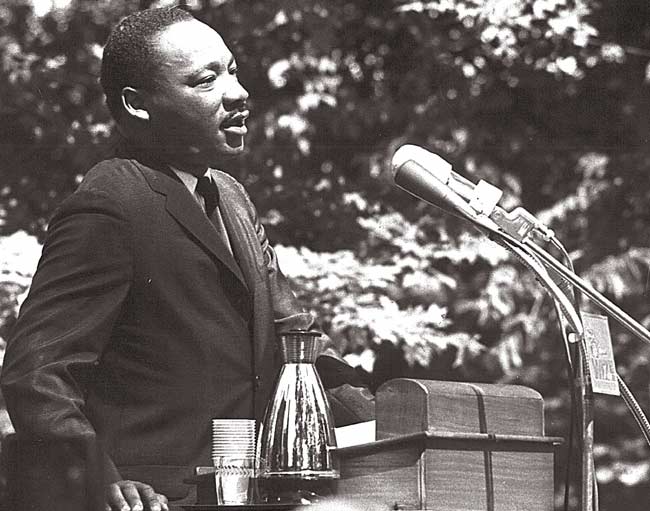African Americans In YS Section :: Page 10
-
MLK Day event at Antioch College— Panel looks at racism, inequality

Columbus resident Kwensi Kambon urged attendees at a Martin Luther King Jr. Day panel session this week at Antioch College to “deputize themselves” and fight against racial inequality and discrimination.
-
MLK Jr. day in Yellow Springs

In observance of Dr. Martin Luther King Jr. Holiday today, Monday, Jan. 20, village offices, schools and the News will be closed.
-
Filmmaker presents rare 1970 King film

A rare 1970 film “King: A Filmed Record” that uses archival news footage will be shown locally as part of MLK Day events.
-
Being black in Yellow Springs
Young people who grew up in Yellow Springs during the 1960s were in a “racial, social and economic bubble” where kids had little awareness of race, class or economic level, according to Yellow Springs natives who will speak soon on the topic, “Being Black in Yellow Springs: The Sixties Experience.”
-
Elders recall a more diverse era

The complicated history of race relations in town and the significant role African Americans have played in the making of Yellow Springs will be addressed at a forum on Monday, Oct. 29, from 7 to 9 p.m. at Antioch University Midwest.
-
Bender honored for WWII service

As a boy growing up in Mississippi, Jonas Bender knew about racism and segregation. But living in “the oasis of integration” that was the college town of Tougaloo, Bender knew about racism mainly from other people’s stories.
-
A civil rights milestone, 50 years on

Fifty years ago this month, African-American villager Paul Graham walked into Lewis Gegner’s barbershop on Xenia Avenue, sat down in his barber chair and asked for a haircut. “I can’t cut your hair,” the white barbershop owner replied, according to Graham’s account. “I don’t know how. That’s all there is to it.” That day Graham […]
-
Gegner legacy strong after 50 years

Fifty years ago this month, African-American villager Paul Graham was refused a haircut at Louis Gegner’s barbershop on Xenia Avenue, sparking a historic legal case at the height of the U.S. civil rights movement. Today, villagers look back on the Gegner incident.
-
2010 Census redux— Stats confirm diversity drop
Yellow Springs has become a much less racially-diverse community with 40 percent fewer people of color than in 1970, according to the latest 2010 U.S. Census data released.
-
Let freedom ring

The streets of Yellow Springs echoed with the sounds of the civil rights movement Monday morning. Admirers of Martin Luther King Jr. chanted “We Shall Overcome” as they marched through the streets; a jovial tribute to one of the most iconic and important figures in American history. Upon the crowd’s arrival at the Central Chapel […]












Recent Comments